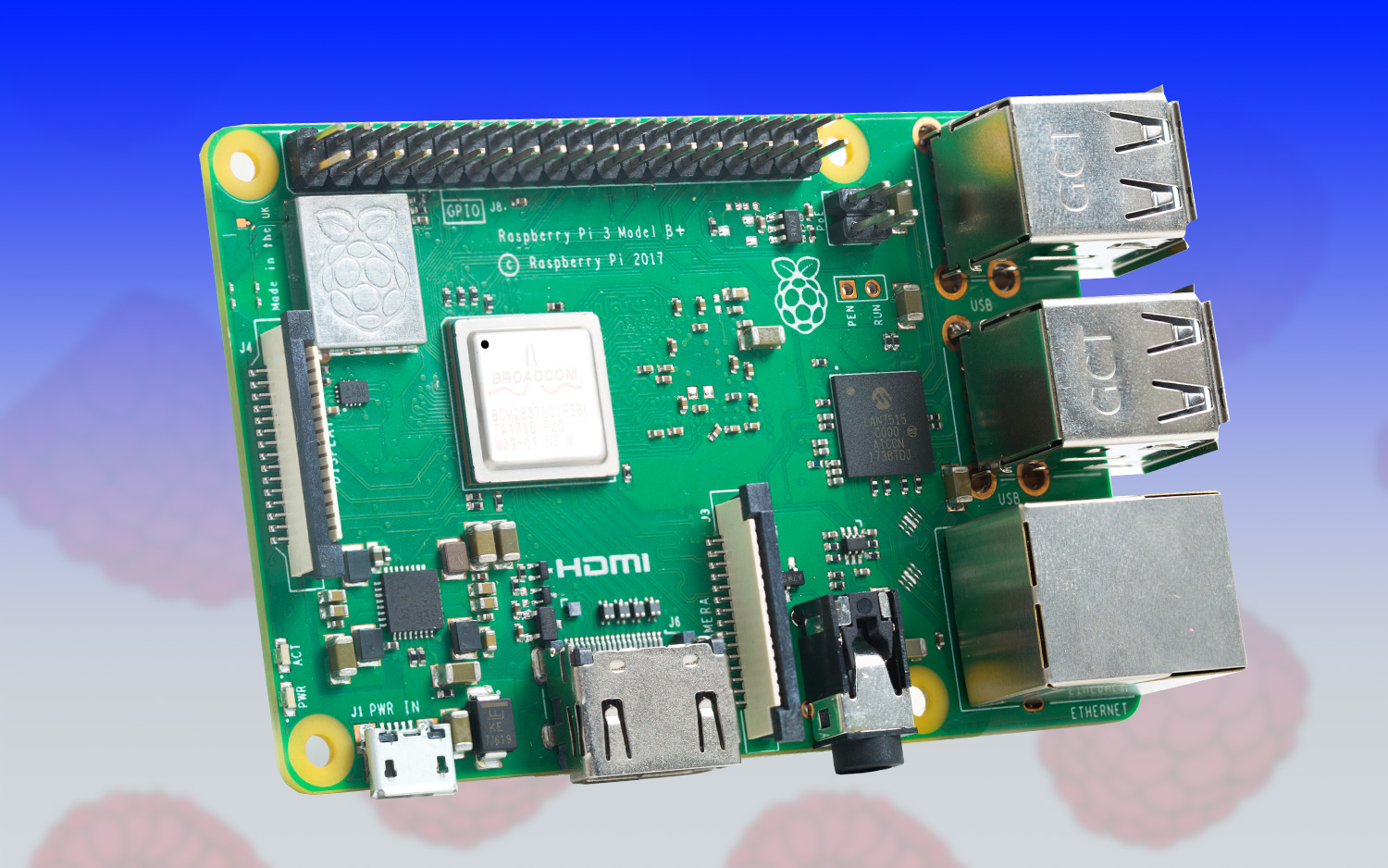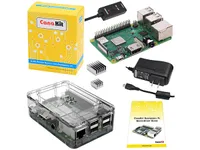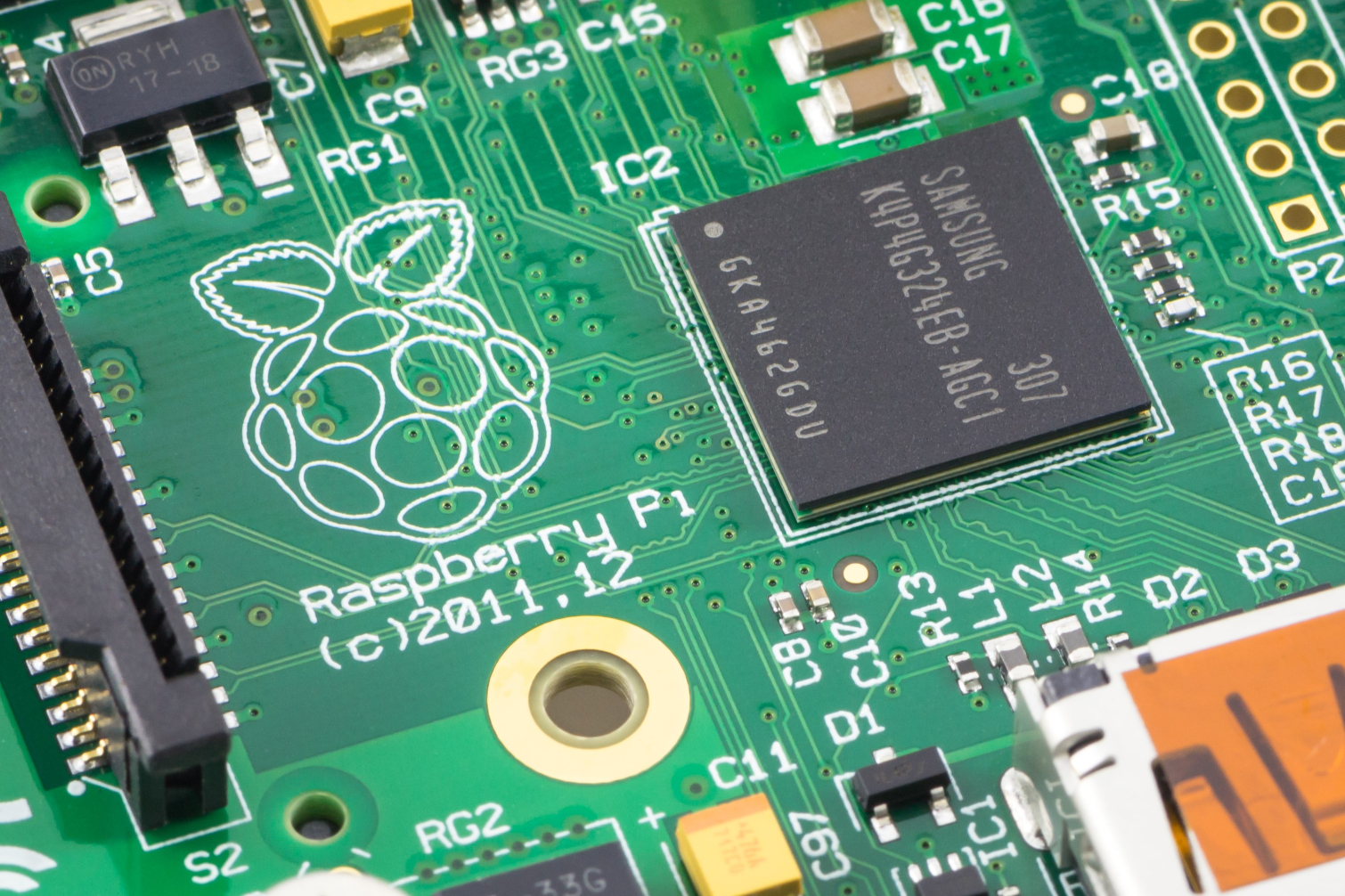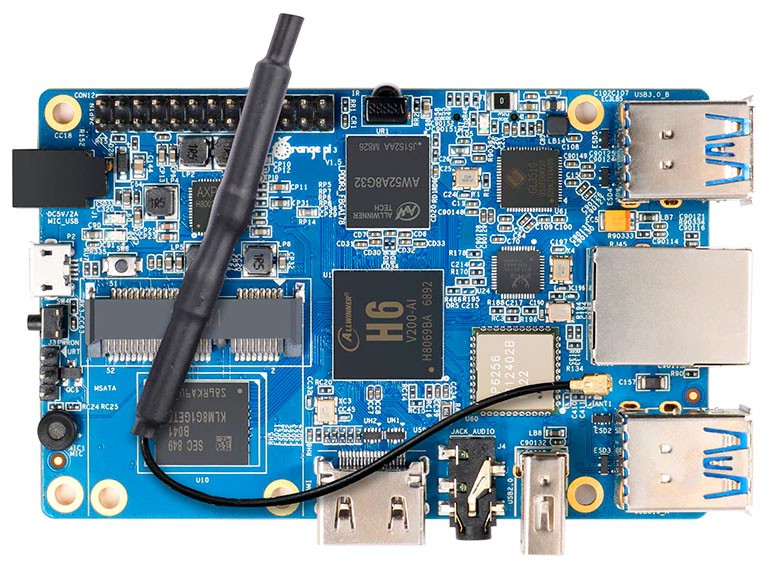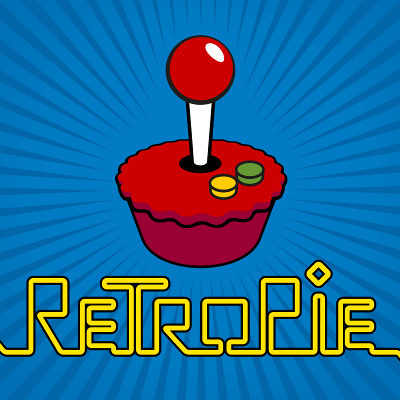Raspberry Pi Founder Shares 10 Things You May Not Have Known
With nearly 25 million units sold, Raspberry Pi is the one of the most popular computing platforms of all-time, and for good reason. A favorite of makers everywhere, these tiny, single-board systems give you enough processing power to run a robot or a retro arcade machine and they start at only $5 (£4.65).
We caught up with Pi Creator and current Raspberry Pi Trading Ltd (the product arm of the Raspberry Pi Foundation) CEO Eben Upton to talk about the fascinating story behind these puny powerhouses and where they're going. In a 40-minute interview, Upton detailed the project's humble beginnings, dished on the next-generation Raspberry Pi, explained why the company keeps selling old devices and told us about the time Google CEO Eric Schmidt called him an idiot.
Here are ten surprising things we learned.
Raspberry Pi Was Meant to Recruit 1,000 Kids
Raspberry Pi was originally designed to solve a very simple problem: a lack of computer science students. Upton told us that Cambridge went from receiving 600 to 250 applications a year for its comp-sci program, and he felt that offering low-cost computers to kids would get them interested in the field.
"The stuff we were designing, the business model side, they were all scaled around the idea that if you could get 1,000 units built and into the hands of the right 1,000 kids [you'd solve the problem]," he said.
After seeing how much interest the system generated, the Raspberry Pi Foundation expanded its mission. Now the non-profit which runs Raspberry Pi targets students around the world with an emphasis on increasing diversity.
Upton explained that he grew up learning about computers in the 1980s and thought that the Pi should be like the hobbyist computers children programmed on during that decade. However, he wants to make sure that Raspberry Pi brings in a more diverse set of kids.
Get Tom's Hardware's best news and in-depth reviews, straight to your inbox.
"If you look at the people who work in tech, now it’s a picture of how undiverse child hobbyist community was in the 1980s," Upton remarked. "So there’s more of a focus now that we make sure the people at the front of the pipeline reflect society."
Maker Community Was a Surprise
Though it was originally designed for kids, the Pi has become extremely popular with adult makers. But when Upton and his team first started designing it, they didn't have this audience in mind. A fateful trip to Maker Faire in New York in 2011 changed his thinking.
"Looking around, this was not something I recognized from the UK," he said. "The big thing that struck me was that there was a kid at the next table who had a doll’s house that he’d automated using Arduino, and that was my first exposure to the maker community. And that doll’s house was my first exposure to the fact that there were kids with the Arduino platform doing STEM stuff in this maker world . . . Physical computing is a big part of what we do and that was the first time that I really perceived that myself."
The company decided that it could not do its own manufacturing after seeing the huge spike in demand from makers. Even before the first Pi shipped to users, thousands of people tested its OS.
"In 2011, we have 50,000 people download a version of our OS which was buggy, which would only work in QEMU. And who were these 50K people who were interested enough in this platform? They weren’t kids. They were makers," he said.
Raspberry Pi 4: Not Until 2020
We covered all of the details Upton shared about the next-gen product in great detail in our Raspberry Pi 4: Everything We Know article so we won't rehash everything here. Some important facts are:
- Don't expect the Raspberry Pi 4 until 2020.
- New models will have more RAM, a faster processor and faster I/O.
- The new chips will be based on a process node that's larger than 7nm, but no larger than 28nm.
- It won't be any larger than the current 3B / 3B+
"I don’t have a route to do something this year," he said. "I think we kind of understand what featureset we want and what would be involved in getting that featureset.I don't think we have a defined plan for turning that into a product yet."
Price is More Important than Performance
The original Raspberry Pi had an MSRP of $35 when it came out in 2012, and, in 2019, the highest-end Pi, the 3B+, also goes for $35. Upton said he learned an important lesson when he showed a prototype of a more-expensive Raspberry Pi 2 to then-Google Executive Chairman Eric Schmidt.
"I had 50 seconds with Eric Schmidt," Upton explained. "And he said, 'hey, what are you doing?' and I’m like ‘we’re going to do a more expensive Raspberry Pi 2,' and he said, 'You’re an idiot. If you’ve got a choice between making a more-capable, more-expensive product and a less-capable, cheaper product, make the less-capable, cheaper product because that’s what people actually want.’ And so I went home and cancelled all the work we had going on the Raspberry Pi 2 and went back to the drawing board."
Upton noted that, when he designed a more cost-effective Raspberry Pi 2, he also started the thought process that would lead him to develop the Pi Zero. He also pointed out that, due to inflation, $35 is worth less in 2019 than it was in 2012.
"I think $35 in 2012 is about $38 now. It’s really insidious because we don’t have very high inflation at the moment, but it’s kind of an insidious crunch that that $35 is going through every time."
How Raspberry Pi Chooses Which Accessories to Make
There's a huge ecosystem of third-party add-on boards, accessories and peripherals for the Raspberry Pi. However, the Pi Foundation also makes a few first-party products, including an official case, a 7-inch touch screen and a camera module. Upton explained that the foundation only creates its own products when either it has superior expertise to the rest of the market or there's a "market failure" where third-party companies aren't serving a consumer need.
"The camera and the display are two areas where the deep knowledge we have [of] the GPU on the device gives us [an advantage]," he said. "There’s no way for someone who’s outside the organization to do it to the quality level we want."
In addition to two official cameras and one official touch screen, the Pi foundation also sells official cases for each Pi form factor, a micro-USB power plug and three different "hats" that can attach to the GPIO pins and provide additional functionality. The Sense hat, which has a series of temperature, pressure and movement sensors, was built so two Raspberry Pi computers could be used for experiments on the ISS (International Space Station).
However, Upton and his team were more conflicted when it came to the idea of building a first-party case.
"We felt there’d been a market failure, that there were really beautiful expensive cases like [Pimoroni] Pibo. That’s a wonderful, but very high-end product, and then there’s a lot of cheap plastic boxes. What we thought was missing was a low-cost, attractive product," he said. "But we agonized over it, because there were companies other than Pimoroni that had come up around building other cases."
Why Raspberry Pi Keeps Making and Selling Old Models
If you peruse the product listings at Raspberrypi.org, you might be surprised to see that the company still lists outdated systems like the Raspberry Pi 1B+ and 2B as current. That's not a mistake. You can still buy The Pi 1 A+, Pi 1B+, Pi 2B and Pi 3B, all of which have been replaced with better systems that cost about the same price (the Pi 3A+ and Pi 3B+).
Upton explained that the company continues manufacturing and selling old products, because half of its sales come from industrial clients who are using the Pi in their own products and need consistency, even if it means sticking with a slower, less-functional device.
"We don’t sell vast numbers of Pi 1s; 5,000 Pi 1s a month would be a good guess, but to those 5,000 people, who are probably mostly industrial customers, it would really suck," he said.
At the Raspberry Pi foundation, EOLing (bringing a product to its "end of life") is a dirty word.
"EOLing product is death. We’ve EOLed [just] five products in our life," Upton told us. He said that the only five products that Raspberry Pi discontinued include the Pi 1A and Pi 1B, because "the Pi 1A+ and B+ are a better implementation of that world."
The camera module 1 in both regular and infrared varieties was EOLed, because the vendor Raspberry Pi relied on stopped making the necessary sensor, and the official Raspberry Pi Wi-Fi dongle had to go, because the OEM that manufactured it stopped making it.
Why There's No Power Switch or ADC
One thing that Raspberry Pi newbies notice right away is that the computers don't have power switches. If you want to turn them on, you just plug them in (via micro-USB) and, to turn them off, you need to pull out the cord, presumably after shutting down in the OS.
I asked Upton why he chose not to put power buttons on the board, and he said that he thinks the majority wouldn't use them. Because every element takes board space and adds cost, he noted, it's important to be selective. The Pi creator illustrated his point by explaining why his systems lack another much-desired feature, a built-in analog-to-digital converter (ADC).
"ADCs cost 10 to 20 cents, and the reason it has never made it onto the Raspberry Pi is that we have this philosophy. If we picked a low-end ADC and put in on the board, I think about 10 percent of our users would use it. Versus the CPU, which 100 percent of the people use or the Wi-Fi, at least north of 50 percent of the people find useful on the product," Upton said. "What we tend to do is we kind of divide through by that fraction. If there’s a 20 cent device we can put on the board and a tenth of users would use it, we force it to pay for itself like a $2.00 component."
Could Windows 10 Come to Raspberry Pi?
There are several operating systems that you can run on the Raspberry Pi, but most of them, including the official Raspbian OS, are some flavor of Linux. Raspberry Pi supports Microsoft’s Windows 10 IoT Core, but that version of Windows doesn’t have a desktop, Start menu or the ability to run apps.
Considering that full Windows 10 now runs on Arm-powered devices like the Samsung Galaxy Book 2, could a version of the world's leading OS come to Raspberry Pi? If it happened, Upton would welcome the new platform.
"I’d love to see full Windows on Pi. I think that would be great. We’ve never been zealots about this stuff. I think the Windows IoT stuff raised some eyebrows, but that’s not who we are," he said.
Upton went on to explain that the Pi Foundation does a lot to contribute to the Linux community, even paying developers to do optimizations for Cortex A53 processors, the same architecture used in the Broadcom BCM2837 that powers all third-gen Raspberry Pis.
"We try to be good members of the [open-source] community and spend a lot of money there, but that isn’t the same thing as if someone comes along with a compelling, closed-source platform to run on top of Pi that we would tell them to go away," he said.
Not Concerned About Clones
The market is filled with Raspberry Pi clones with brand names such as Orange Pi and Banana Pi. These products are the same or a similar form factor to the Pi and Pi Zero, but offer slightly-different specs. For example, the Banana Pi M2 Zero uses a quad-core Cortex A7 Allwinner H2+ processor instead of the single-core Broadcom BCM2835 in the Pi Zero / Zero W, but also costs at least 80 percent more ($18 versus $10 USD).
Upton said he's not concerned about these competitors, at least not yet.
"I don’t think anyone has launched anything yet that I feel is threatening," he said. "I think it’s great we’re a category-defining product, and you define a category and other people are going to launch products in the category."
Emulation a Powerful Use Case
The Raspberry Pi is the computer of choice for users who want to build their own retro consoles. As long as you install RetroPie, you can play old-fashioned arcade games, Atari games, Nintendo and Sega titles, Amiga software and more. Upton said that he is excited by the Pi's popularity with retro fans, but encourages people not to pirate old games.
"There’s a perception that emulation automatically equals piracy. I think there’s a lot of stuff you can do with emulators on the Pi that doesn’t run across copyright issues," he said.
In fact, there are some brand new programs being written for the Amiga, and Upton is the one writing the code.
"One of the challenges of running Pi is that I was an engineer once, but now mostly I’ve got a business to look after so I have to get my engineering kicks in my spare time," Upton told us. "Usually I get them from retro development, and the availability of retro Amiga on the Pi has been great so I’ve been able to do that [and] it’s kind of fun."
Avram Piltch is Managing Editor: Special Projects. When he's not playing with the latest gadgets at work or putting on VR helmets at trade shows, you'll find him rooting his phone, taking apart his PC, or coding plugins. With his technical knowledge and passion for testing, Avram developed many real-world benchmarks, including our laptop battery test.

